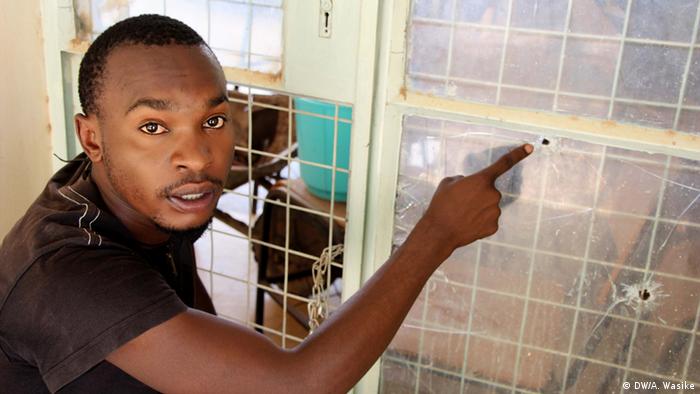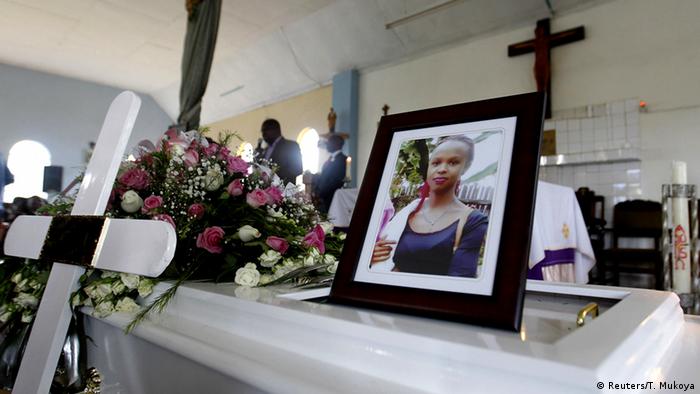Kenya
Garissa: A year after the Horror
On 2. April 2015 stormed the militants of the Al-Shabaab militia, the University, in Kenya’s Garissa, and killed 148 people. How are the Survivors today?

It is a strange feeling to walk across the Campus of the University of Garissa. 148 people were here, in the case of an attack
Islamist militia Al-Shabaab on 2. April 2015 killed. In the crosshairs of the terrorists: the student residence of Mount Elgon. Today it is abandoned, a ghostly silence on the corridors. You can see bullet holes in Windows and doors.
Past the courtyard, where after the attack, more than 80 lifeless body lay on the floor, up the stairs, is a room with zugenagelter door. Through the window you can see blood stains in the shape of a human body. Attempts to remove the blood that had previously failed, says an employee of the University.
A new beginning?
Some of the buildings on Campus were renovated, and freshly painted. This January, the University opened again. To the Dorm around trees were planted in memory of the students who were here a year ago, your life. The Mount Elgon was renamed the Ewaso-Ngiro-living home. To help students and staff to leave the events behind.

Since January, the operation at the University is up and running again
“I had a lot of friends, the
when the attack died. It feels so terrible,” says the 24-year-old Sofia Noor Soiyan, a student in the third year. “We think of you every day.”
Most students find it to hard today, with the aftermath of the attack. “I had a very hard time. Most of my friends were murdered in the attack in cold blood,” says Mohammed, who would not give his last name. He was lucky – he was sick on that 2. April and remained with his parents. “I had one of the Killed can be. All of the Dorm are dead,” he says.
Students are traumatized
After the attack, the University of Garissa were closed, most of the students alternated at the Moi University. Some dropped out of their studies – they had been traumatized, explained University rector Ahmed Warfa. “Even today, some of them are still in therapy. It’s not easy,” he says. “Some were depressed, but most of them are over the hill and study again.”

Exactly one year ago, murdered by Al-Shabaab fighters 148 people in Garissa
Warfas house is just a few meters from the gate of the University. Today, at the Desk in his office, he recalls the Moment when the attack began. “You came over here,” he says and shows through the window on the main entrance. “Then they went through the hallway and heard the prayer the students from the Christian Union. There, they killed the twelve victims.”
Authorities in the criticism
The rector thought that the Kill with the Arrival of the police and the soldiers would have an end. But that was not the case. “Instead of going inside, shot the soldiers from a distance,” he says. “It would have been for three or four men a Light to storm the building and rescue the students. But they did not.”
The Kenyan authorities for their slow response to the attack
again and again sharply criticized the company because of a military base is located in close proximity to the University. From gate to gate is only 500 meters.
Increased security on the Campus
As a late response to the attack, a police has been set up station on the University campus. 25 heavily armed police officers have now service. You control every visitor that would like to through the gate. In addition, the Kenyan government has promised the construction of a 2.6-million-Euro wall around the entire Campus. Still, the mood is tense.

The presence of security guards is to give the students a sense of security
“The exaggerated security here has changed the mood in the whole Region,” says Faisal Aden, a Student of the University. “The residents feel that the security measures have been increased.”
After the attack, there was a veritable Exodus from Garissa. Even business people and traders, back Packed their belongings and returned to their home towns. They went in fear of their life and because their only customers, the students, were no longer there. Aden is happy that new students attend the University. More than 160 currently. “A year after the attack, may heal the wounds at last – and the University can once again be as it once was,” he hopes.

